
Unit 5 Overview: Conflict, Crisis, and Reaction in the Late 18th Century
6 min read•january 23, 2023
Jillian Holbrook
Jillian Holbrook
Welcome to Unit 5, the last of three units spanning 1648 to 1815! Unit 5 focuses on political events in the second half of the period and beyond. These events were intertwined with economic and intellectual developments.
Commercial Rivalries
During this time, European commerce (buying and selling for profit) grew rapidly as merchants and companies used worldwide economic networks. European states competed economically by promoting businesses from their own countries and building overseas empires, particularly in the Atlantic World. This competition sometimes led to conflicts (including wars) in and around the Atlantic and the Indian Oceans. 🌊
The rivalry between Britain and France led to worldwide wars fought in Europe, the Americas, and Asia. By 1815, Britain had clearly replaced France as the greatest European power. In Asia and Africa, the Portuguese and Dutch competed with Britain and France, too. Ultimately, Britain controlled much of India, and the Dutch controlled the East Indies (present-day Indonesia) through their respective East India Companies.
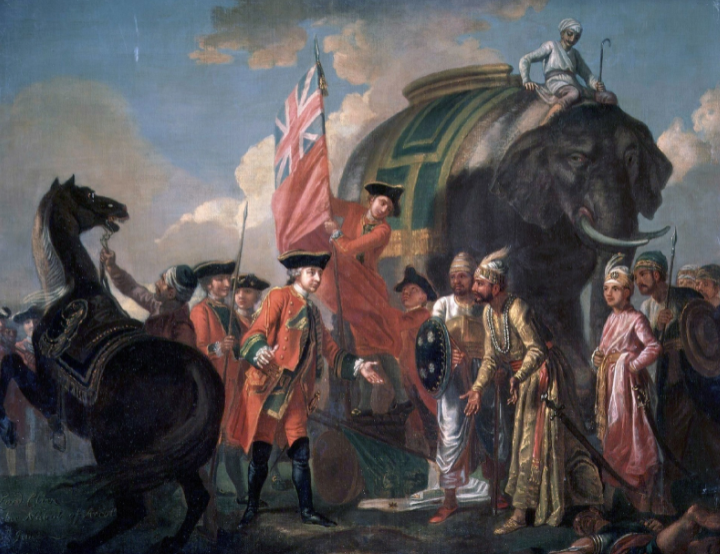
Francis Hayman’s painting of British victory at the Battle of Plassey in India, 1757
Models of Political Sovereignty
As seen in the first four units, sovereignty refers to the highest political power to make and enforce rules—disagreements over how sovereignty should work contributed to revolutions and wars.
The French Revolution
Causes
Several factors led to this unit’s most important development: the French Revolution. Before its Revolution, an absolute monarchy ruled France. King Louis XVI (16th) faced significant financial and political problems. 🤴
The bourgeoisie (who often had at least some wealth but were not noble), peasants (small farmers), and urban workers were often frustrated with their lack of privileges and political power. Meanwhile, nobles had privileges, but many noblemen wanted political influence. Coincidentally, bread shortages in the late 1780s created famine and suffering, which compounded bubbling frustration and mounting tension.
Using Enlightenment ideas about individual freedom and government legitimacy, many people expressed their desire for change in the face of France's challenges.
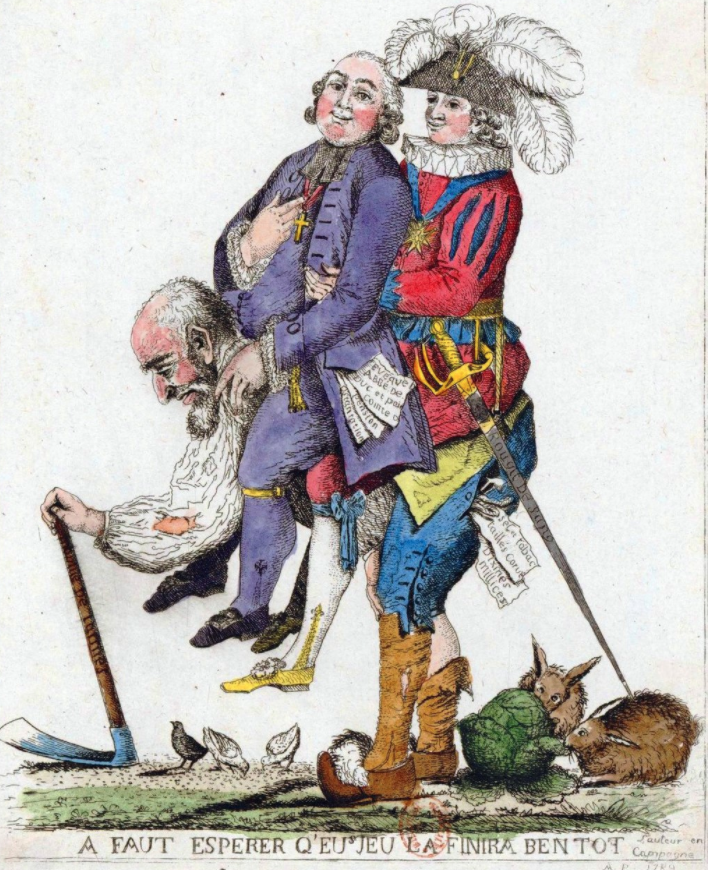
French print showing commoners carrying Catholic clergy (church officials) and nobles on their backs, 1789
First Phase: 1789-1792
The French Revolution began in 1789 with rebellions in the country and the cities. Simultaneously, representatives of the common people and some clergy and nobles established a constitutional monarchy. In Paris, people attacked royal authority, such as the Bastille and the Palace at Versailles, while revolutionaries wrote the Declaration of the Rights of Man and Citizen and eliminated noble privileges. The revolutionary government took over lands from the Catholic Church to raise money and seize control of France. 💰
Women participated in crowd violence, but men excluded them from formal politics. Olympe de Gouges (1748-1793) was a French playwright, political activist, and feminist best known for her work fighting for the rights of women and for her role in the French Revolution. De Gouges became politically active during the French Revolution and wrote several plays and pamphlets that criticized the government and emphasized female equality. She is particularly known for her work Declaration of the Rights of Woman and the Female Citizen (1791), which, modeled after the Declaration of the Rights of Man and of the Citizen, advocated for the equality of rights for women. ✍️
Men directly primarily participated in the new government by voting. Additionally, they formed and joined political clubs and societies, such as the Jacobins, which advocated for the rights of the poor and working-class, and the Girondins, which advocated for a constitutional monarchy. These organizations provided men with platforms to mobilize and push for political change. However, men also participated in the revolution by joining the military, either as volunteers or as conscripts. The French army played a crucial role in the revolution, and many men joined to defend the revolutionary cause both domestically and abroad.

Crowds attack the Bastille, 1789
Second Phase: 1793-1794
The following two years included more radical (far-reaching) changes. Maximilien Robespierre and his associates in the Jacobin party influenced the proclamation of the first French Republic after the National Convention, where the revolutionary assembly abolished the monarchy. The new government was based on the principles of popular sovereignty, and its goal was to establish a political system in which power was vested in the people.
During the French Republic, the government implemented a number of significant reforms, such as the abolition of feudalism and the establishment of a new legal system, which abolished privileges based on birth and provided equal rights to all citizens. The Republic also established a new system of education and public works, which aimed to improve the lives of the poor and working class. Jacobins particularly attempted to help the poor by regulating bread prices. 🍞
However, this new series of governments, including the Directory and the Consulate, was marked by political turmoil and internal conflict as different factions struggled for control of the government. The Republic sought to de-Christianize France and executed Louis XVI. Radical Jacobins began a Reign of Terror, meant to frighten people into supporting the revolution, a period characterized by political repression and mass killings (where many lost their heads).
Despite internal strife, the Republic managed to defend itself against external conflicts. Defending France from invasion by foreign monarchies, the Republic exported the revolution through their own invasions.
Political and Social Effects
The French Revolution constituted a worldwide development. Inspired by France, others revolutionaries emerged in countries across the globe. For example, Saint-Domingue, a French colony in the Caribbean, was the scene of a dramatic revolution. Under the leadership of Toussaint Louverture, free people of color and enslaved people successfully revolted against oppression to create the independent republic of Haiti. 🌎
However, in Europe, condemnation of the violence of the French Revolution contributed to the development of conservative ideology.
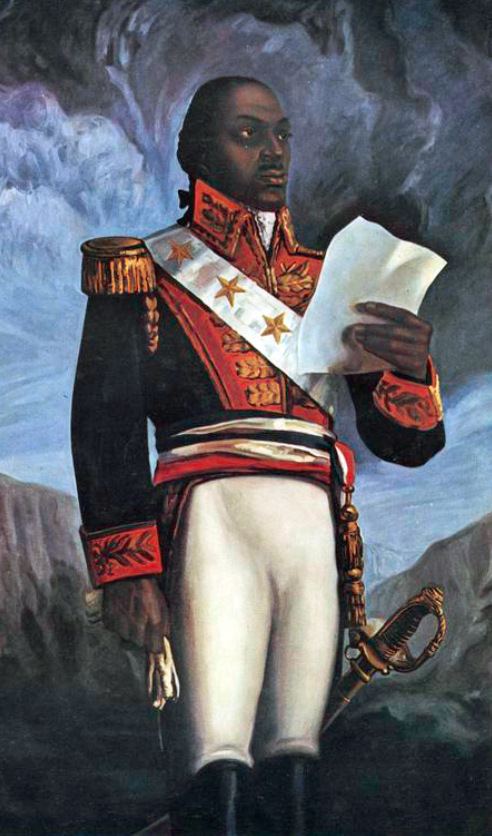
19th-century painting of the Haitian leader Toussaint Louverture
Napoleon
Napoleon Bonaparte dominated European affairs from 1799 to 1815. A general during the revolution, Napoleon gained control of the republican government and eventually crowned himself emperor of France. 👑
Napoleon preserved some elements of the Revolution (particularly the equal treatment of men by the law) while reversing popular sovereignty by ruling as a dictator. Napoleon used large armies and effective military tactics to gain control over much of Europe through frequent wars. These wars inspired new ideas of nationalism in France and the countries that it controlled. 🪖
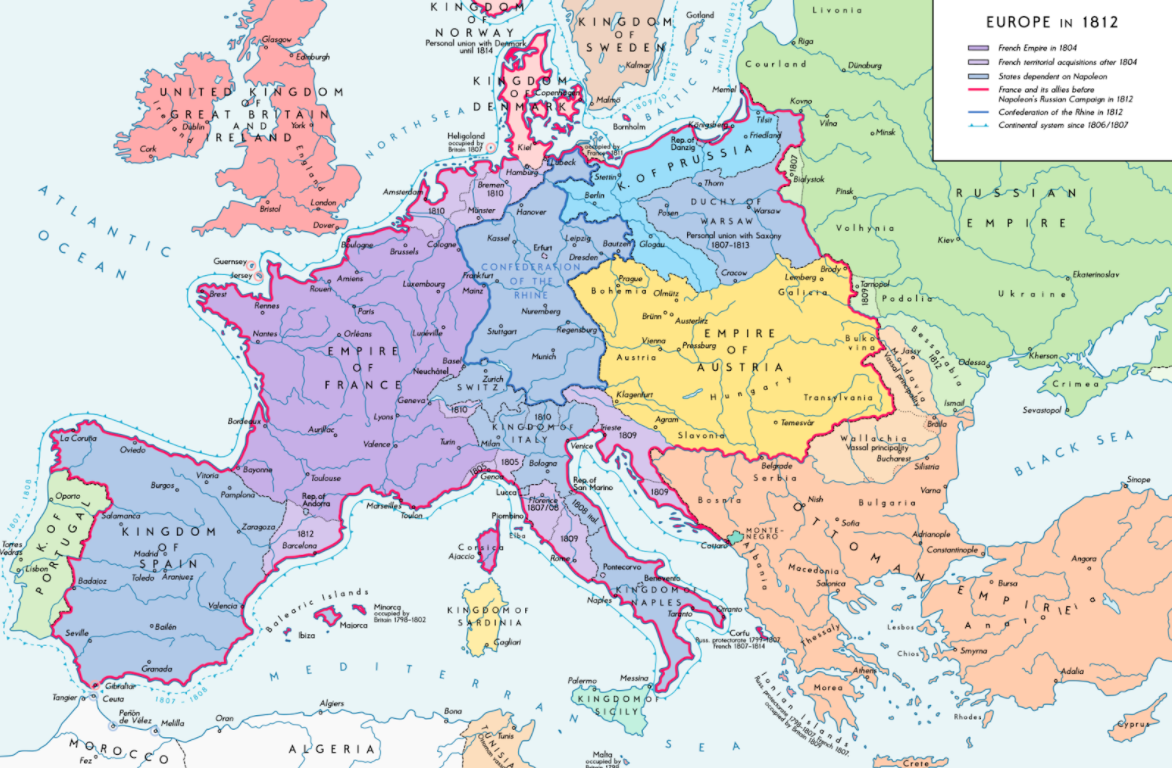
The French Empire under Napoleon, 1812
Eventually, a coalition of European countries defeated Napoleon’s armies. The international negotiations for peace that followed these wars are known as the Congress of Vienna (one guess as to where they happened). Negotiators attempted to reestablish a balance of power in Europe and worked to prevent revolutions. ⚖️
🎥 Watch: AP European History - Napoleon
The Romantic Movement
Starting in the mid-1700s and accelerating during the French Revolution, many European scholars and artists challenged the Enlightenment obsession with reason by championing natural processes and human emotions. This movement is known as Romanticism, and it had a profound influence on European thought into the 1800s. 💭
Jean Jacques Rousseau influenced Romanticism and French Revolutionaries. Consistent with this turn away from pure reason toward emotion, Christianity revived, with John Wesley’s Methodism serving as a notable example.
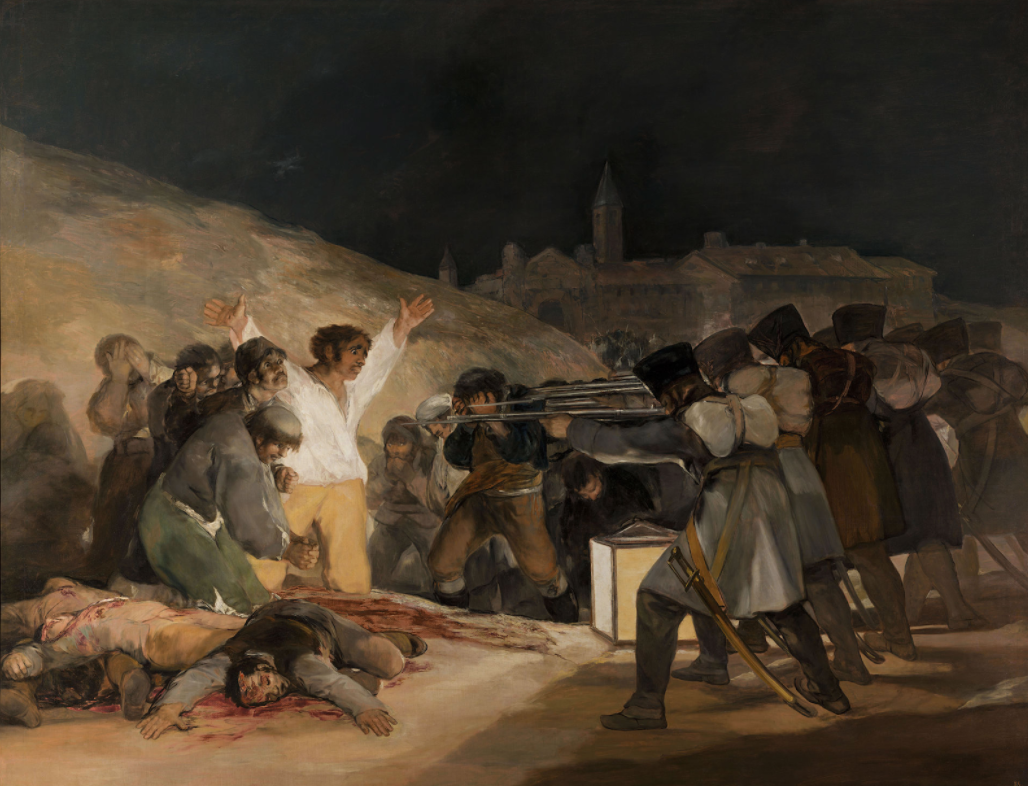
Francisco Goya’s The Third of May 1808, 1814, depicts emotion and nationalism
Unit 5 Overview: Conflict, Crisis, and Reaction in the Late 18th Century
6 min read•january 23, 2023
Jillian Holbrook
Jillian Holbrook
Welcome to Unit 5, the last of three units spanning 1648 to 1815! Unit 5 focuses on political events in the second half of the period and beyond. These events were intertwined with economic and intellectual developments.
Commercial Rivalries
During this time, European commerce (buying and selling for profit) grew rapidly as merchants and companies used worldwide economic networks. European states competed economically by promoting businesses from their own countries and building overseas empires, particularly in the Atlantic World. This competition sometimes led to conflicts (including wars) in and around the Atlantic and the Indian Oceans. 🌊
The rivalry between Britain and France led to worldwide wars fought in Europe, the Americas, and Asia. By 1815, Britain had clearly replaced France as the greatest European power. In Asia and Africa, the Portuguese and Dutch competed with Britain and France, too. Ultimately, Britain controlled much of India, and the Dutch controlled the East Indies (present-day Indonesia) through their respective East India Companies.

Francis Hayman’s painting of British victory at the Battle of Plassey in India, 1757
Models of Political Sovereignty
As seen in the first four units, sovereignty refers to the highest political power to make and enforce rules—disagreements over how sovereignty should work contributed to revolutions and wars.
The French Revolution
Causes
Several factors led to this unit’s most important development: the French Revolution. Before its Revolution, an absolute monarchy ruled France. King Louis XVI (16th) faced significant financial and political problems. 🤴
The bourgeoisie (who often had at least some wealth but were not noble), peasants (small farmers), and urban workers were often frustrated with their lack of privileges and political power. Meanwhile, nobles had privileges, but many noblemen wanted political influence. Coincidentally, bread shortages in the late 1780s created famine and suffering, which compounded bubbling frustration and mounting tension.
Using Enlightenment ideas about individual freedom and government legitimacy, many people expressed their desire for change in the face of France's challenges.

French print showing commoners carrying Catholic clergy (church officials) and nobles on their backs, 1789
First Phase: 1789-1792
The French Revolution began in 1789 with rebellions in the country and the cities. Simultaneously, representatives of the common people and some clergy and nobles established a constitutional monarchy. In Paris, people attacked royal authority, such as the Bastille and the Palace at Versailles, while revolutionaries wrote the Declaration of the Rights of Man and Citizen and eliminated noble privileges. The revolutionary government took over lands from the Catholic Church to raise money and seize control of France. 💰
Women participated in crowd violence, but men excluded them from formal politics. Olympe de Gouges (1748-1793) was a French playwright, political activist, and feminist best known for her work fighting for the rights of women and for her role in the French Revolution. De Gouges became politically active during the French Revolution and wrote several plays and pamphlets that criticized the government and emphasized female equality. She is particularly known for her work Declaration of the Rights of Woman and the Female Citizen (1791), which, modeled after the Declaration of the Rights of Man and of the Citizen, advocated for the equality of rights for women. ✍️
Men directly primarily participated in the new government by voting. Additionally, they formed and joined political clubs and societies, such as the Jacobins, which advocated for the rights of the poor and working-class, and the Girondins, which advocated for a constitutional monarchy. These organizations provided men with platforms to mobilize and push for political change. However, men also participated in the revolution by joining the military, either as volunteers or as conscripts. The French army played a crucial role in the revolution, and many men joined to defend the revolutionary cause both domestically and abroad.

Crowds attack the Bastille, 1789
Second Phase: 1793-1794
The following two years included more radical (far-reaching) changes. Maximilien Robespierre and his associates in the Jacobin party influenced the proclamation of the first French Republic after the National Convention, where the revolutionary assembly abolished the monarchy. The new government was based on the principles of popular sovereignty, and its goal was to establish a political system in which power was vested in the people.
During the French Republic, the government implemented a number of significant reforms, such as the abolition of feudalism and the establishment of a new legal system, which abolished privileges based on birth and provided equal rights to all citizens. The Republic also established a new system of education and public works, which aimed to improve the lives of the poor and working class. Jacobins particularly attempted to help the poor by regulating bread prices. 🍞
However, this new series of governments, including the Directory and the Consulate, was marked by political turmoil and internal conflict as different factions struggled for control of the government. The Republic sought to de-Christianize France and executed Louis XVI. Radical Jacobins began a Reign of Terror, meant to frighten people into supporting the revolution, a period characterized by political repression and mass killings (where many lost their heads).
Despite internal strife, the Republic managed to defend itself against external conflicts. Defending France from invasion by foreign monarchies, the Republic exported the revolution through their own invasions.
Political and Social Effects
The French Revolution constituted a worldwide development. Inspired by France, others revolutionaries emerged in countries across the globe. For example, Saint-Domingue, a French colony in the Caribbean, was the scene of a dramatic revolution. Under the leadership of Toussaint Louverture, free people of color and enslaved people successfully revolted against oppression to create the independent republic of Haiti. 🌎
However, in Europe, condemnation of the violence of the French Revolution contributed to the development of conservative ideology.

19th-century painting of the Haitian leader Toussaint Louverture
Napoleon
Napoleon Bonaparte dominated European affairs from 1799 to 1815. A general during the revolution, Napoleon gained control of the republican government and eventually crowned himself emperor of France. 👑
Napoleon preserved some elements of the Revolution (particularly the equal treatment of men by the law) while reversing popular sovereignty by ruling as a dictator. Napoleon used large armies and effective military tactics to gain control over much of Europe through frequent wars. These wars inspired new ideas of nationalism in France and the countries that it controlled. 🪖

The French Empire under Napoleon, 1812
Eventually, a coalition of European countries defeated Napoleon’s armies. The international negotiations for peace that followed these wars are known as the Congress of Vienna (one guess as to where they happened). Negotiators attempted to reestablish a balance of power in Europe and worked to prevent revolutions. ⚖️
🎥 Watch: AP European History - Napoleon
The Romantic Movement
Starting in the mid-1700s and accelerating during the French Revolution, many European scholars and artists challenged the Enlightenment obsession with reason by championing natural processes and human emotions. This movement is known as Romanticism, and it had a profound influence on European thought into the 1800s. 💭
Jean Jacques Rousseau influenced Romanticism and French Revolutionaries. Consistent with this turn away from pure reason toward emotion, Christianity revived, with John Wesley’s Methodism serving as a notable example.

Francisco Goya’s The Third of May 1808, 1814, depicts emotion and nationalism

Resources
© 2024 Fiveable Inc. All rights reserved.
AP® and SAT® are trademarks registered by the College Board, which is not affiliated with, and does not endorse this website.